CARBON REMOVAL WEEKLY SUMMARY (26 AUGUST - 01 SEPTEMBER 2024)-WEEK#35
Links to recent scientific papers, web posts, upcoming events, job opportunities, podcasts, and event recordings, etc. on Carbon Dioxide Removal Technology.
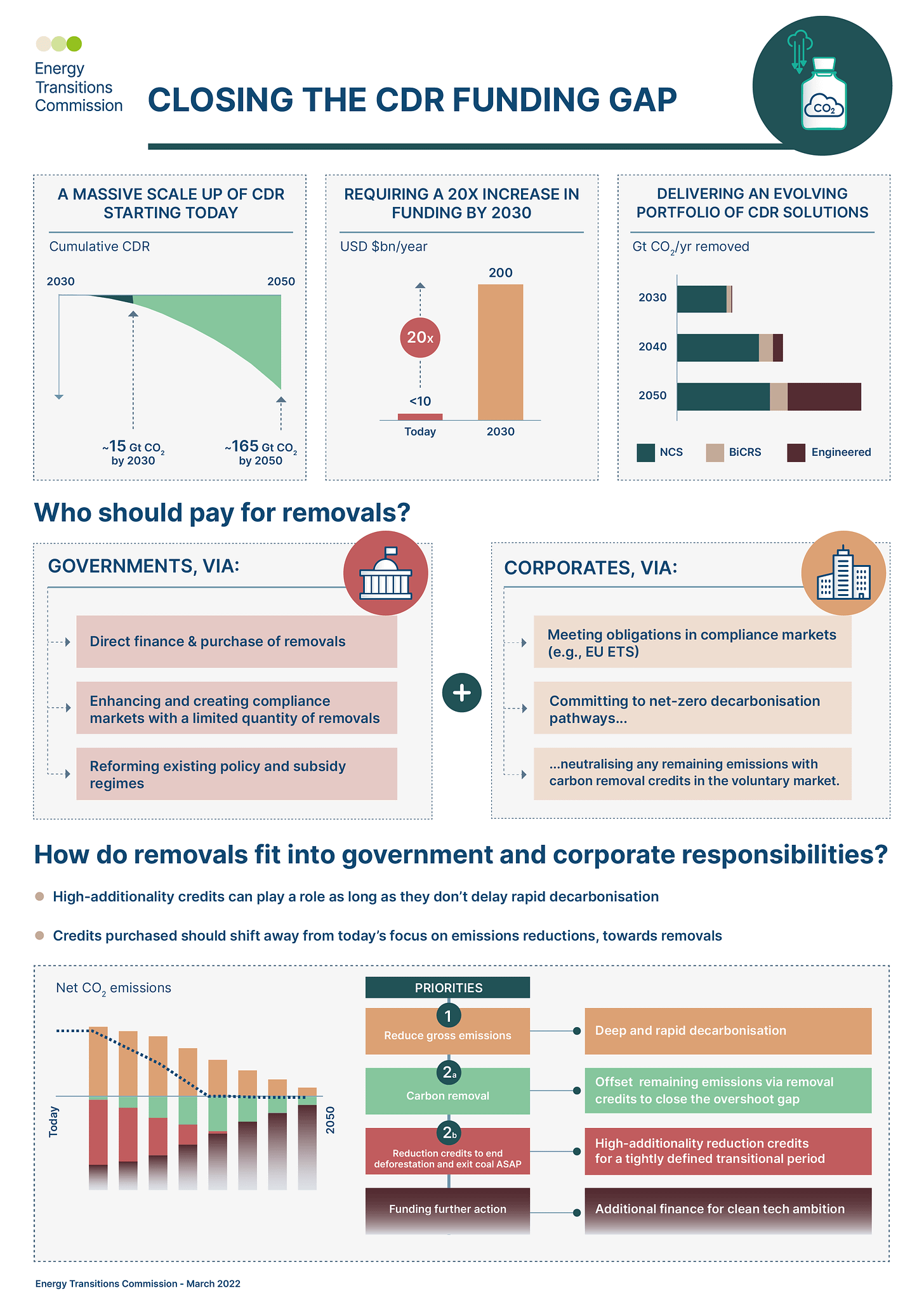
📋TABLE OF CONTENTS
1. Commercial News
2. Research Papers
3. Web Posts
4. Thesis
5. Reports
6. Upcoming Events
7. Job Opportunities
8. Podcasts
9. YouTube Videos
10. Deadlines
Note: Click on the headings listed in the table of contents above to easily navigate to the sections you're interested in.
💸COMMERCIAL NEWS
TotalEnergies signed a $100 million agreement with Anew Climate and Aurora Sustainable Lands to preserve sustainable carbon sinks (Anew Climate)
Enhanced rock weathering startup Eion Carbon is set to receive an investment from the Exelon Climate Change Investment Initiative (Carbon Herald)
Puro.earth issued 1st Terrestrial Storage of Biomass CORCs to WoodCachePBC (LinkedIn)
Marubeni Corporation and Japan Petroleum Exploration Co., Ltd. have entered into a joint study agreement with PT pertamina to conduct a feasibility assessment on BECCS at a pulp mill and nearby oil field area in South Sumatra Province, Indonesia (Marubeni)
CEEZER announced the graduation of the 2nd cohort of the CEEZER Carbon Coalition, a program targeted to early-stage project developers working on CDR solutions (Ceezer)
Germany-based company Kumo has launched a platform allowing carbon project developers to model their financing needs and plan investments by putting them in touch with prospective lenders (Quantum Commodity Intelligence)
Brazil bank approves close to $29m for Mombak ARR projects (Quantum Commodity Intelligence)
📝RESEARCH PAPERS
Genome-edited trees for high-performance engineered wood
Liu, Y., Li, G., Mao, Y., Gao, Y., Zhao, M., Brozena, A., ... & Hu, L. (2024). Genome-edited trees for high-performance engineered wood. Matter.
Synopsis: The study introduces a genome-editing approach to reduce lignin in poplar wood, achieving a 12.8% reduction using the cytosine base editor nCas9-A3A/Y130F. This method enables chemical-free, sustainable production of high-performance engineered wood with tensile strength comparable to aluminum alloy. Conducted to reduce CO2 emissions and enhance carbon sequestration, it offers a sustainable alternative to conventional methods.
Mixing and dilution controls on marine CO2 removal using alkalinity enhancement
Khangaonkar, T., Carter, B., Premathilake, L., Yun, S. K., Ni, W., Stoll, M. M., ... & Feely, R. A. (2024). Mixing and dilution controls on marine CO2 removal using alkalinity enhancement. Environmental Research Letters.
Synopsis: The study simulates marine CO2 removal in the Salish Sea, using enhanced-alkalinity seawater produced by bipolar membrane electrodialysis. Large-scale deployment removed 2,066 T of CO2/yr, with a notable pH increase, offsetting historical acidification. Conducted to evaluate CO2 removal efficacy, the findings suggest that nearshore estuarine waters may offer more effective and rapid CO2 removal than deeper oceanic sites.
The role of framing in public support for direct air capture: A moral hazard survey experiment in the United States
Sloot, D., & Bostrom, A. (2024). The role of framing in public support for direct air capture: A moral hazard survey experiment in the United States. Energy Research & Social Science, 116, 103694.
Synopsis: The study investigates public support for direct air capture of CO2, framing it as either essential or contingent on future mitigation. Conducted to address concerns that DAC could undermine climate efforts, the findings reveal that framing had minimal impact on support, which was modest overall. Higher prior awareness and climate change worry increased support, suggesting tailored messaging may enhance public acceptance of DAC.
Carbon dioxide capture using Escherichia coli expressing carbonic anhydrase in a foam bioreactor
Watson, S. K., Han, Z., Su, W. W., Deshusses, M. A., & Kan, E. (2016). Carbon dioxide capture using Escherichia coli expressing carbonic anhydrase in a foam bioreactor. Environmental technology, 37(24), 3186-3192.
Synopsis: The study explores CO2 capture and conversion to bicarbonate using E. coli expressing carbonic anhydrase on its surface in a novel foam bioreactor. Conducted to enhance CO2 removal efficiency, the system achieved a 93% removal rate with 9570 g CO2/m³/h, outperforming previous bioreactor technologies. The findings suggest this bioreactor as a promising alternative for efficient CO2 capture.
Integration of Carbon Dioxide Removal (CDR) Technology and Artificial Intelligence (AI) in Energy System Optimization
Li, G., Luo, T., Liu, R., Song, C., Zhao, C., Wu, S., & Liu, Z. (2024). Integration of Carbon Dioxide Removal (CDR) Technology and Artificial Intelligence (AI) in Energy System Optimization. Processes, 12(2), 402.
Synopsis: The study reviews the integration of AI and carbon dioxide removal technologies, identifying four key approaches: carbon emissions assessment, optimized energy systems, real-time monitoring, and mutual benefits. Conducted to explore AI's potential in enhancing CDR's environmental and economic impact, it highlights future research directions, including improved modeling, data integration, and interdisciplinary collaboration for real-world applications.
Demystifying carbon removals in the context of offsetting for sub-global net-zero targets
Möllersten, K., Dufour, M., Ahonen, H. M., & Spalding-Fecher, R. (2024). Demystifying carbon removals in the context of offsetting for sub-global net-zero targets. Carbon Management, 15(1), 2390840.
Synopsis: The study challenges the view that emission reduction credits (ERCs) are inadequate for offsetting emissions in net-zero and carbon-neutrality claims. It demonstrates that both ERCs and carbon removal credits (CRCs) equally impact net GHG transfer to the atmosphere. Conducted to clarify misconceptions, the findings have significant implications for evaluating GHG mitigation actions and the validity of net-zero claims.
The public use of early-stage scientific advances in carbon dioxide removal: a science-technology-policy-media perspective
Tripodi, G., Lillo, F., Mavilia, R., Mina, A., Chiaromonte, F., & Lamperti, F. (2024). The public use of early-stage scientific advances in carbon dioxide removal: a science-technology-policy-media perspective. Environmental Research Letters.
Synopsis: The study uses a bibliometric approach to assess the societal impact of early-stage Carbon Dioxide Removal (CDR) research, finding significant, positive spillovers across science, technology, policy, and media. Conducted to address the coordination gaps in CDR development, it reveals that Direct Air Capture research drives technological innovation, while Blue Carbon and BECCS gain momentum in policy and public debate.
Sapling recruitment as an indicator of carbon resiliency in forests of the northern USA
Harris, L. B., Woodall, C. W., & D'Amato, A. W. (2024). Sapling recruitment as an indicator of carbon resiliency in forests of the northern USA. Ecology and Evolution, 14(8), e70077.
Synopsis: The study examines how tree regeneration affects future carbon dynamics in forests across the northeastern and midwestern USA. Using forest inventory data, it predicts that 29% of plots may lose carbon, 55% could replace it, and 16% might gain carbon based on seedling composition. Conducted to inform forest management, the findings highlight the need to prioritize regeneration strategies to enhance long-term carbon resilience.
Carbon emissions from the 2023 Canadian wildfires
Byrne, B., Liu, J., Bowman, K. W., Pascolini-Campbell, M., Chatterjee, A., Pandey, S., ... & Sinha, S. (2024). Carbon emissions from the 2023 Canadian wildfires. Nature, 1-5.
Synopsis: The study quantifies the carbon emissions from the 2023 Canadian forest fires, finding a staggering 647 TgC released, comparable to the annual fossil fuel emissions of large nations. Conducted to assess the climate impact, it reveals that extreme heat and dryness, projected to become typical by the 2050s, were key drivers. This raises concerns about the future of Canadian forests as carbon sinks.
Assessment of Calcimetry as a Reliable Method for Monitoring Soil Inorganic Carbon Stocks
Silva, J. M., Bomio, M. R., Motta, F. V., & Santos, R. M. (2024). Assessment of Calcimetry as a Reliable Method for Monitoring Soil Inorganic Carbon Stocks. ACS Agricultural Science & Technology.
Synopsis: The research assesses the reliability of calcimetry, a direct method for measuring soil inorganic carbon (SIC), in the context of land management and carbon stock monitoring. It examines the impact of factors like solid-to-liquid ratio and interfering reactions, confirming calcimetry's reliability within typical soil conditions. Conducted to ensure accurate SIC measurement, the findings support its use in climate change mitigation strategies involving enhanced rock weathering.
Potential and costs required for methane removal to compete with BECCS as a mitigation option
Gaucher, Y., Tanaka, K., Johansson, D. J., Boucher, O., & Ciais, P. (2024). Potential and costs required for methane removal to compete with BECCS as a mitigation option. Authorea Preprints.
Synopsis: The study evaluates the cost-effectiveness of atmospheric methane removal (MR) compared to carbon dioxide removal (CDR) for meeting climate targets. Using an optimization model, it finds MR needs to remove 180-320 MtCH4/year at costs between $10,000 and $34,000/tCH4 to be competitive with CDR. MR could replace bioenergy-based CDR but would shift the timing of mitigation efforts. This research addresses the viability of MR as a complement to CDR in climate strategies.
Global ocean carbon uptake enhanced by rainfall
Parc, L., Bellenger, H., Bopp, L., Perrot, X., & Ho, D. T. (2024). Global ocean carbon uptake enhanced by rainfall. Nature Geoscience, 1-7.
Synopsis: The study estimates rain's impact on global ocean carbon uptake from 2008–2018. Rain enhances the ocean carbon sink by 0.14–0.19 PgC/yr, increasing overall ocean carbon uptake by 5–7%. This is due to increased turbulence and CO2 dilution from rain and wet deposition. The effects are notable in the tropics, storm track regions, and the Southern Ocean, highlighting rain’s significant yet often overlooked role in ocean carbon dynamics.
The feasibility of reaching gigatonne scale CO2 storage by mid-century
Zhang, Y., Jackson, C., & Krevor, S. (2024). The feasibility of reaching gigatonne scale CO2 storage by mid-century. Nature Communications, 15(1), 6913.
Synopsis: The study evaluates the feasibility of scaling up CO2 storage by 2050, considering geological and techno-economic constraints. It projects a maximum global storage rate of 16 GtCO2/yr, primarily dependent on the U.S. for 60% of this capacity. This contrasts with the Sixth Assessment Report’s overestimates for countries like China and Indonesia. A more realistic global storage rate, aligning with current technology roadmaps, is 5-6 GtCO2/yr, with the U.S. contributing about 1 GtCO2/yr.
Carbon dioxide removal through ecosystem restoration: Public perceptions and political participation
Kuhn, A., Merk, C., & Wunsch, A. (2024). Carbon dioxide removal through ecosystem restoration: Public perceptions and political participation. Ambio, 1-15.
Synopsis: The study compares public perceptions of ecosystem restoration in Germany, finding forests highly favored, peatlands viewed negatively, and seagrass mostly unknown. Focus group participants preferred expert-led decisions and had positive views on all ecosystems, unlike survey respondents who favored afforestation. Results suggest that the public may underestimate the political complexity of ecosystem governance and does not prioritize citizen participation or land use conflicts as much as policy recommendations suggest.
Land use and cover change accelerated China’s land carbon sinks limits soil carbon
Cheng, Y., Luo, P., Yang, H., Li, M., Ni, M., Li, H., ... & Wang, L. (2024). Land use and cover change accelerated China’s land carbon sinks limits soil carbon. npj Climate and Atmospheric Science, 7(1), 199.
Synopsis: The study investigates how land use and cover change (LUCC) affects the land carbon cycle, finding that LUCC has led to a 39.2% reduction in soil organic carbon (SOC) in China. Afforestation mitigates this loss, doubling gross primary productivity. Indirect climate effects, like soil bulk density, significantly influence SOC. LUCC has enhanced China's terrestrial carbon sink, highlighting the crucial role of reforestation in climate change mitigation and carbon management.
Direct air capture (DAC) vs. Direct ocean capture (DOC)–A perspective on scale-up demonstrations and environmental relevance to sustain decarbonization
Al Yafiee, O., Mumtaz, F., Kumari, P., Karanikolos, G. N., Decarlis, A., & Dumée, L. F. (2024). Direct air capture (DAC) vs. Direct ocean capture (DOC)–A perspective on scale-up demonstrations and environmental relevance to sustain decarbonization. Chemical Engineering Journal, 154421.
Synopsis: The paper reviews the status, challenges, and scalability of Direct Air Capture and Direct Ocean Capture technologies for CO2 removal. It highlights high operational costs, energy demands, and the need for green energy integration. Techno-economic analyses are emphasized to assess the feasibility of large-scale deployment and effectiveness in mitigating CO2 emissions, crucial for addressing global warming and marine ecosystem impacts.
A Case Study of a Nature-Based Approach to Carbon Sequestration in Aquatic Habitats as a Strategy to Mitigate Climate Change along the Egyptian Northern Lakes
Salah, A. E., Ali, E. M., & Temraz, T. A. (2024). A Case Study of a Nature-Based Approach to Carbon Sequestration in Aquatic Habitats as a Strategy to Mitigate Climate Change along the Egyptian Northern Lakes. Advances in Environmental and Life Sciences.
Synopsis: This research evaluates carbon sequestration rates in water and sediment from four northern Egyptian lakes, finding water's sequestration capacity significantly higher than sediment. It also notes that the common wetland plant Phragmites australis is linked to reduced carbon sequestration compared to unplanted areas. The study recommends considering Azolla spp. as a more effective plant species for enhancing carbon sequestration while maintaining ecological balance.
Lessons for scaling direct air capture from the history of ammonia synthesis
Roberts, C., & Nemet, G. (2024). Lessons for scaling direct air capture from the history of ammonia synthesis. Energy Research & Social Science, 117, 103696.
Synopsis: The study explores the feasibility of scaling up high-temperature direct air capture using ammonia synthesis as a historical analogy. It finds that rapid DAC deployment to gigaton-scale by mid-century is possible, similar to ammonia synthesis, provided there is significant political and economic support. Lessons from ammonia synthesis suggest that accelerated deployment of DAC will require substantial changes in incentive structures and support systems.
Kaya Identity Defines Realistic Negative Emissions Targets for Large Nations and the World
Diyashev, I. R., & Spath, J. B. (2024, August). Kaya Identity Defines Realistic Negative Emissions Targets for Large Nations and the World. In SPE Energy Transition Symposium (p. D021S009R002). SPE.
Synopsis: This paper outlines a methodology for developing realistic energy transition scenarios, focusing on existing and cost-effective technologies, including negative emissions technologies. It builds projections for GDP, energy consumption, and transition costs, with detailed scenarios for the USA, and brief ones for China and India. Key findings include the need for substantial negative emissions to achieve net-zero targets and a decarbonization rate aligned with a <2°C temperature rise. The methodology, also used for educational purposes at Texas A&M University, simplifies energy and emissions projections through exponential growth approximations.
Comprehensive review of experimental studies, numerical modeling, leakage risk assessment, monitoring, and control in geological storage of carbon dioxide: Implications for effective CO2 deployment strategies
Sori, A., Moghaddas, J., & Abedpour, H. Comprehensive review of experimental studies, numerical modeling, leakage risk assessment, monitoring, and control in geological storage of carbon dioxide: Implications for effective CO2 deployment strategies. Greenhouse Gases: Science and Technology.
Synopsis: This review article provides a comprehensive overview of geological CO2 sequestration, focusing on advancements in numerical simulations, experimental studies, risk assessments, and monitoring techniques. Key findings include the integration of machine learning in CO2 behavior prediction, innovative experimental approaches, and robust risk assessment frameworks. The review highlights gaps in current knowledge and offers a roadmap for future research to improve CO2 storage safety and efficiency, aiding global climate change mitigation efforts.
Synergizing sustainability: a critical review on harnessing agroforestry for biomass, carbon sequestration, and water-food-energy nexus
Barman, A., Dutta, S., Bera, A., Saha, P., Roy, J., Roy Choudhury, M., ... & Das, S. (2024). Synergizing sustainability: a critical review on harnessing agroforestry for biomass, carbon sequestration, and water-food-energy nexus. Energy, Ecology and Environment, 1-35.
Synopsis: This review assesses 24 years of research on agroforestry's role in sustainability, focusing on biomass production, carbon sequestration, and the water-food-energy nexus. It highlights varying biomass yields and carbon storage across different agroforestry systems, such as poplar and Karanda-based systems. The study underscores agroforestry's multifaceted benefits, including reduced soil loss and enhanced water use efficiency. Key findings stress the need for further research on scaling practices, socio-economic impacts, and policy integration to maximize agroforestry's potential in achieving sustainable development goals.
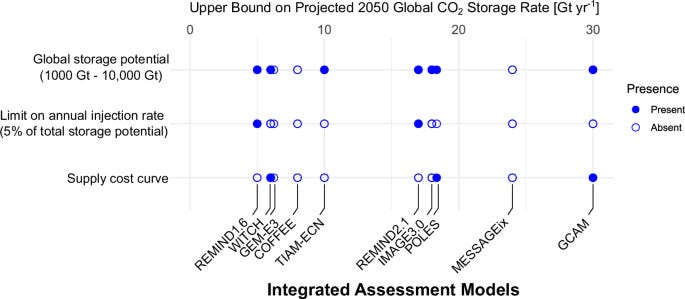
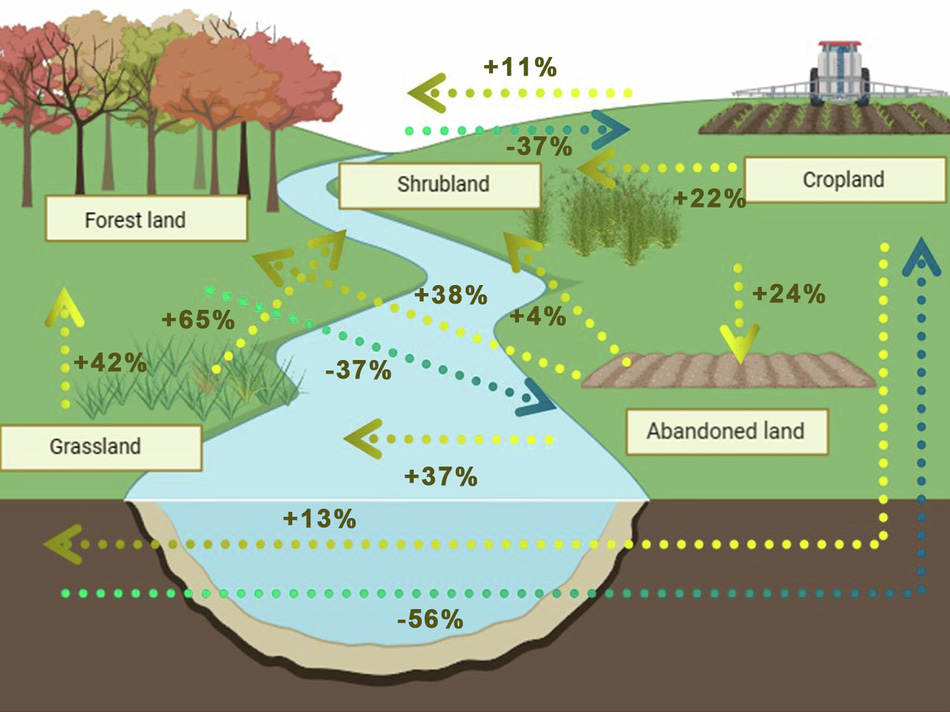
📰WEB POSTS
SB 308: Seeking to deepen California’s commitment to carbon dioxide removal (Illuminem)
Japan's GX-League and Carbon Removal in GX-ETS (CDR.fyi)
Deep Sky experts have carbon removal answers for Innisfailians (The Albertan)
Canadian organisations demand carbon removal target for 2035 (Quantum Commodity Intelligence)
Engaging Communities on Ocean Alkalinity Enhancement: Insights from Two Workshops in Sequim, Washington (Institute for Responsible Carbon Removal)
Electrochemical DAC Technology Plants: Regenerating Supply Chains (The Regenescape)
Stashing more CO2 in the ocean could slow climate change (Science News Explore)
Sinking seaweed—An ambitious strategy aims to cool the planet by dumping farmed seaweed on the sea floor. Will it work? (Science)
EMB Working Group on Marine CDR kicks-off (European Marine Board)
How carbon removal can help curb wildfires and build houses (High Country News)
BECCS champion Drax agrees to pay £25 mln after regulator finds gaps in wood pellet sourcing (Carbon Pulse)
US CDR marketplace halts operations on 'stagnant' market (Qunatum Commodity Intelligence)
P.E.I. forests emit more carbon than they absorb after damage from 2022 storm (The Globe and Mail)
CarbonCapture Inc. Pauses Development Of Project Bison In Wyoming (Carbon Herald)
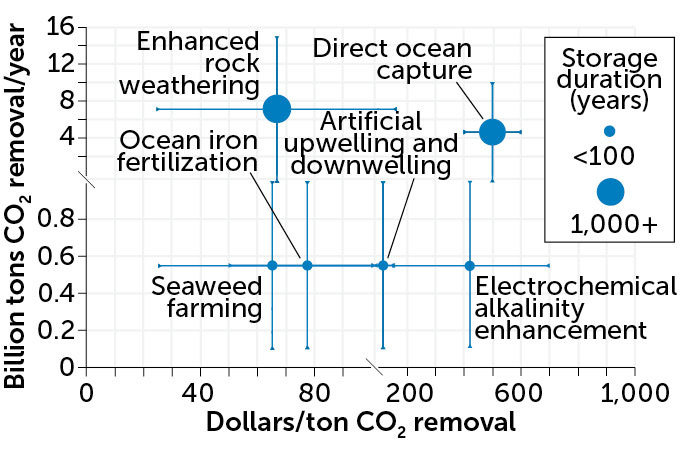
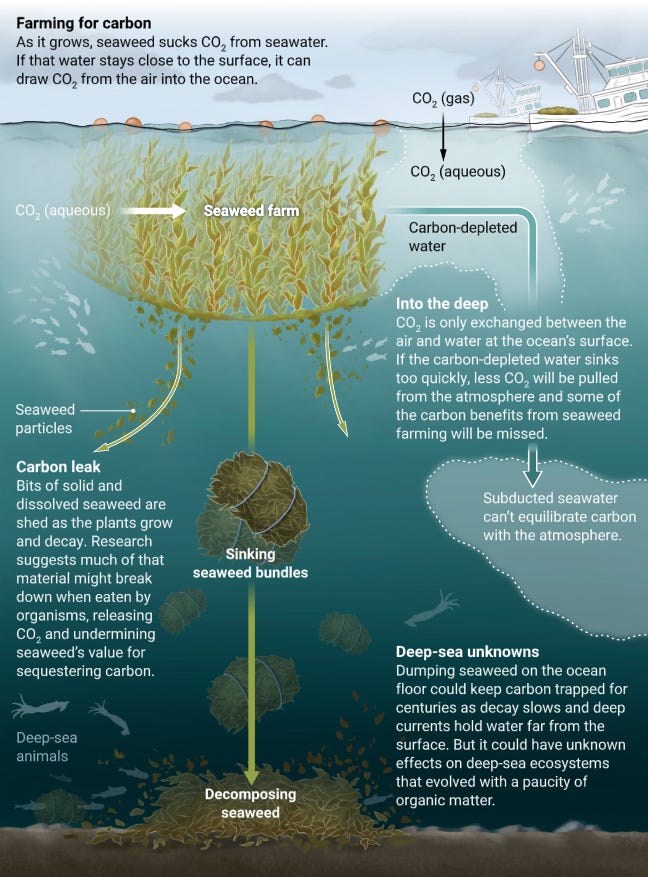
📖THESIS
How to maintain environmental integrity when using state support and the VCM to co-finance BECCS projects - a Swedish case study
📃REPORTS
5 Learnings About CDR Policy Landscape (AlliedOffsets)
Carbon Dioxide Removal Market Analysis Growth, Trends and Regional Forecast 2024-2028 (Technavio)
Assumptions on potentials for Carbon Dioxide Removals in the EU—A review of recent European Commission impact assessments (German Environment Agency)
🗓️UPCOMING EVENTS
(NEW) Introducting CDRai by OpenAir Collective | 04 September 2024 | Online
(NEW) 2024 International Seminar of Biochar Carbon Removal Industrial Actions to Climate Adaptation in Taiwan | 04 September 2024 | Taiwan
Digging into the Terrestrial Pathway with Carbon Lockdown by Climate Vault | 04 September 2024 | Online
CDR Copenhagen by Carbonfuture, CEEZAR, Mash Makes, Innovation Centre Denmark, Carbon Removal Partners | 04 September 2024 | København
(NEW) Women+ AirMiners Virtual Networking by AirMiners | 05 September 2024 | Online
Panel Discussion: ‘Climate overshoot: devastating risks and possible responses’ by University of Oxford | 10 September 2024 | Oxford, London
(NEW) Isometric Open House by Isometric | 10 September 2024 | London, England
2024 Carbon Removal Capital Summit by XPRIZE & Santander CIB | 10-12 September 2024 | San Francisco
Unlocking Technological Innovation with Octavia Carbon by Climate Vault | 11 September 2024 | Online
Carbon Unbound Europe | 11-12 September 2024
Responsible Carbon Removal Workshop: Centering Indigenous Leadership by Carbon Removal Canada | 12 September 2024 | British Columbia
(NEW) Exploring the Policy Landscape of Carbon Dioxide Removal by The Environmental and Energy Study Institute (EESI) and the World Resources Institute (WRI) | 12 September 2024 | Washington
Rethinking Logistics for Effective Biochar Production by International Biochar Initiative | 12 September 2024 | Online
Carbfix Mineralization Summit 2024 | 12-13 September 2024
Grounding Carbon Farming at Wageningen University & Research by WIMEK in collaboration with SBL, ENP, NGO myclimate, and the farm "La ferme de Hyaumet" | 14-20 September 2024 | France
Community-Centered CDR: Opportunities and Challenges by Institute for Responsible Carbon Removal | 17 September 2024 | Online
Understanding the Role of Carbon Dioxide Removal in Long-term Climate Planning by World Resources Institute | 17 September 2024 | Online
Advancing a Transparent and Responsible mCDR Industry by Ocean Visions and Hourglass Climate | 17 September 2024 | Online
(NEW) Scaling Carbon Removal with Confidence: The Key Role of Independent, Digital MRV by Carbonfuture | 18 September 2024 | Online
Financing resilience through carbon removal by Klimate.co | 18 September 2024 | Online
Roads to Removal, Options for Carbon Dioxide Removal in the United States | 18 September 2024 | Online & In-Person (Pennsylvania)
Navigating Dioxide Removal: The Role of Policy, Regulation, and Value Chains by International Biochar Initiative | 19 September 2024 | Online
(NEW) What to know before investing in CDR—Navigating Challenges, Trends, and Future Opportunities by Sylvera | 19 September 2024 | Online
Carbon Clean-up Camp | 19-22 September 2024 | UK
(NEW) Climate Week NYC | 22-29 September 2024 | New York
EU Carbon Removal Certification Framework: Rules on Verification and Registries - Stakeholder Workshop by EU Commission | 23 September 2024 | Online & In Person (Brussels)
CDR Community Happy Hour: Climate Week NYC Edition! by Carbon Business Council & 3 others | 23 September 2024 | New York
Accelerating Research, Development, and Demonstration for Responsible Marine Carbon Dioxide Removal – Where Are We on the Road to 2030? by Ocean Visions | 23 September 2024 | New York
Puro.earth NY Climate Week CDR Summit by Puro.earth Americas | 24 September 2024 | New York
CRCF Online Workshop: Carbon Storage Certification of Buildings by EU | 24 September 2024 | Online
Great Plains Biochar Conference by The University of Nebraska–Lincoln Department of Agronomy and Horticulture, the Nebraska Forest Service and the Nebraska Biochar Initiative | 24-26 September 2024 | Nebraska
The Biochar Carbon Revolution: Innovative Financing, Products, and Partnerships to Reduce Value-Chain Emissions by International Biochar Initiative | 25 September 2024 | United States
Hope for the Cryosphere? An Introduction to Ocean Visions’ Road Map of Potential Approaches to Slow the Loss of Arctic Sea Ice by Ocean Visions | 25 September 2024 | New York
The Biochar Carbon Revolution by Grain Ecosystem | 25 September 2024 | Manhattan, New York
(NEW) Moving beyond polarization on climate interventions at Climate Week New York | 25 September 2024 | United States
(NEW) Carbon Newbie Summit at NYC Climate Week 2024 by BeZero, CEEZER, Clever Carbon | 26 September 2024 | New York
CO2NNECT 2024 by the Great Plains Institute's Carbon Action Alliance | 29 September - 01 October 2024 | Colorado
Bellona Climate Action Conference | 01 October 2024 | Brussels (Belgium)
EO for Monitoring, Reporting, and Verification of Carbon Removals by European Environment Agency | 8-11 October 2024 | Copenhagen
Carbon Removal Canada's Policy Report Launch: Procuring with Purpose by Carbon Removal Canada | 09 October 2024 | Ottawa, Canada
Volcanoes and past climate: adventures with deep carbon | 12 October 2024 | Online & ExCeL London
(NEW) The 2nd Swedish Conference on Sewage Sludge Biochar | 15-16 October 2024 | Sweden
IBI Biochar Study Tour: Italy by the Italian Biochar Association and the International Biochar Initiative | 16-18 October 2024 | Florence, Italy
Futures Summit 2024 by alt Carbon | 16-18 October 2024 | New Delhi
5th EU Carbon Removals Expert Group meeting | 21-23 October 2024 | Online
Exploring the Ethics and Societal Interactions of Climate Intervention by the U.S. National Science Foundation
Discovery workshop focussing on terrestrial science (CDR) | 22 October 2024 | Online
Discovery workshop focussing on ocean science (CDR) | 25 October 2024 | Online
Integrative synthesis workshop focusing on identifying gaps in current governance & ethics | 18 November 2024 | Online
Carbon Unbound West Coast | 25-26 October | San Francisco, USA
The State of Durable Carbon Removal by Verge | 29 October 2024 | California, US
(NEW) Why Canada is poised to be a Carbon Removal Superpower by OSPE | 29 October 2024 | Windsor, ON
Carbon Removal Pathways We Don't Talk About Enough by Verge | 30 October 2024 | California, US
From Wetlands to the Deep Ocean: Dive Into Marine-Based Carbon Removal by Verge | 30 October 2024 | California, US
Getting to Gigatonne: Barriers (and Pathways) to Scaling Carbon Removal In The Next 25 Years by Verge | 30 October 2024 | California, US
How to apply biochar in sustainability management and accounting | German Biochar Forum | 18 November 2024
Industrial Energy Green Transition 2024 | 3-5 December 2024 | Tokyo
Scoping Workshop: Leaky deltas: sources or sinks in the global carbon cycle? by OCB | 17-20 March 2025 | Baton Rouge, LA
Bio-Char IV Conference | May 18-23, 2025 | Santa Marta, Colombia
We have curated a “Carbon Removal Events Calendar.” Explore and stay informed about upcoming events, conferences, and webinars on Carbon Dioxide Removal technology. Sync specific events / all events to your default calendar to ensure you never miss out on important CDR updates.
GUIDELINES:
Sync selected events to your default calendar in these simple steps:
1) Click on the event you want to sync.
2) Tap the menu icon (three vertical lines) at the top left.
3) Choose 'Share.'
4) Pick your default calendar.
5) Save the event.
Sync the entire Teamup Calendar to your default calendar with these simple steps:
1) Tap the menu icon (three vertical lines) at the top right.
2) Choose 'Preferences.'
3) Click 'iCalendar Feeds.'
4) Copy the URL shown for 'CDR Events / CDR General Guidelines / CDR Job Deadlines.'’
5) Paste the URL into your default calendar settings.
6) Click 'Subscribe' or 'Add Calendar.'
For more detailed instructions, visit: https://calendar.teamup.com/kb/subscribe-to-teamup-icalendar-feeds/
You can directly sync all Carbon Removal events to your default calendars by pressing the link below:
💼JOB OPPORTUNITIES
Coastal Ocean Modeler (mCDR) at Ephemeral Carbon | Santa Clara, California, United States
"Ephemeral Carbon safely remove atmospheric carbon while countering ocean acidification, improving life above and below the surface. Our approach accelerates rock weathering, the natural process of rainwater becoming alkalized as it returns to the sea.
Using renewable energy, we extract alkalinity from rocks and industrial wastes. When released at sea, it transforms CO2 into harmless bicarbonates, locking carbon away for over 100,000 years."
Postdoctoral position in Engineering and Politics of Carbon Storage at Lund University | Sweden | Deadline to apply: 23 September 2024
"Carbon dioxide removal (CDR) is now considered essential for keeping global warming to 1.5°C. Direct air carbon capture and storage (DACCS) is commonly seen as among the most secure in terms of carbon storage, particularly when paired with mineralization as the chosen storage method. Nevertheless, key questions remain as to how permanent such removal methods actually are.
In this project, we focus on direct air capture with carbon mineralization in basalts (DACCS-b) because of the considerable public and private interest this technology has attracted in past years. Taking an inter-disciplinary approach, the research aims to combine the study of narratives and policy analysis with state-of-the-art geological knowledge, to explore how DACCS-b can be governed to address the uncertainties and risks of non-permanent carbon storage."
Staff Electrochemical Engineer at Uplift | Baltimore, MD
"At Uplift, we’re on a mission to enable clean and low-cost battery metals production using our patent-pending chemical recycling device. By updating decades-old metallurgical processes with the latest advances in electrochemical membrane technology, we're increasing the accessibility of electric vehicles from the ground up. Specifically, we are building electrochemical membrane devices to regenerate acids and bases from brine streams for the integration into hydrometallurgical flow sheets. Conventional processes do not recycle acids, but rather neutralize them in carbon-emitting reactions that produce solid waste streams. The industry-leading energy efficiencies of our devices and their avoidance of hazardous gas byproducts enable a revolution in the production of metals including nickel, cobalt, and manganese."
Founder's Associate at Brineworks | Amsterdam, North Holland, Netherlands
"Brineworks is building the future of affordable, scaleable, and responsible ocean-based CO2 removal."
Injection Operations Engineer (BH0143) at Charm Industrial | Wichita, Kansas, United States
"Charm Industrial is working to return the atmosphere to 280 ppm CO₂. We design, build and operate a fleet of mobile fast pyrolyzers that convert ag and forest biomass residues into bio-oil for use in carbon removal and direct-reduced-iron steelmaking."
Product Marketing Lead at Sylvera | London
"Sylvera provides carbon data for genuine climate impact. Their mission is to incentivize investment in real climate action."
Sales Lead at Thalo Labs | New York
"We’re Thalo Labs, a NYC-based company on a mission to transform the built environment into a powerful tool for fighting climate change. Where others see buildings as part of the problem, we see an incredible opportunity to leverage existing infrastructure to not only accelerate drawdown, but to transform the built environment from one of the biggest carbon emitters to a carbon sink. Our technology combines proprietary sensing, software, and capture systems to accurately measure, significantly reduce, and directly capture a building’s onsite greenhouse gasses in real time."
🎙️PODCASTS
ClearPath Senior Program Director for Carbon Management & Science Hillary O’Brien | USEA Power Sector Podcast
"In today’s USEA Power Sector Podcast, ClearPath Senior Program Director for Carbon Management and Science Hillary O’Brien answered questions by journalist Herman K. Trabish about the need for direct air capture of carbon dioxide, its potential, its costs, and its future challenges."
Turning waste into a carbon removals business | Energy Sector Podcast
"In this episode we shift our focus from the transport and storage of carbon to the capture side of the value chain. David Linden spoke with Mike Maudsely, the CEO of enfinium, a leading UK Energy from Waste (EfW) operator on the decarbonisation vision for enfinium and the EfW sector, and the central role that CCS plays in this. David and Mike discuss the technical and commercial balancing act that needs to be struck to achieve the breadth of benefits available in decarbonising EfW facilities."
You can listen to unlimited podcasts on the Carbon Dioxide Removal technology here:
Reviewer 2 quibbles with actual experts in Solar Radiation Modification and Carbon Dioxide Removal, before rejecting their work on spurious, spiteful and capricious grounds.
🎥YOUTUBE VIDEOS
This Is CDR Ep. 102: Isometric with Neil Hacker & Stacy Kauk | OpenAir
"Join us for a discussion of what Isometric does, how Isometric is different from other registries with their focus on scientific rigor, transparency, aligned incentives, and speed, what quality means when it comes to carbon credits, and Isometric's modular approach to protocol development and what protocols have launched recently."
Epiphyte Weekly Meetup: Opensource DAC | OpenAir
"Epiphyte is a desk-scale, open source direct air capture (DAC) prototype designed by volunteer members of the OpenAir Collective. Every Thursday our core team gets together on stream to tackle problems, debate ideas, and plan our next build."
Weekly Carbon Removal Updates from 26 August - 01 September 2024 | Carbon Removal Updates Bulletin
You can watch unlimited podcasts on the Carbon Dioxide Removal technology here:
🚨DEADLINES
Call for tenders for a study on "Carbon Sequestration Capacity of Seabeds" by European Climate, Infrastructure and Environment Executive Agency | Deadline: 29 August 2024
Student Monitoring and Reporting Technology for Carbon Dioxide Removal Competition by Mission Innovation | Proposals are due by 09 September 2024
The Europe Accelerator Program by Remove | 09 September 2024
Funding opportunity: An invitation to artists and creatives by The CO2RE Artists, Arts and Humanities Greenhouse Gas Removal (GGR) Initiative | 09 September 2024
The European Commission has announced a $30 million (€28.5 million) call for proposals to provide funding for carbon dioxide removal projects in the EU | Deadline: 17 September 2024
Call for Papers: EJRR Special Issue on Climate Interventions Governance (Carbon Dioxide Removal, Solar Radiation Modification, Regional Intervention)
Abstract Submission Deadline: 01 October 2024
Full Manuscript Submission Deadline: 31 December 2024





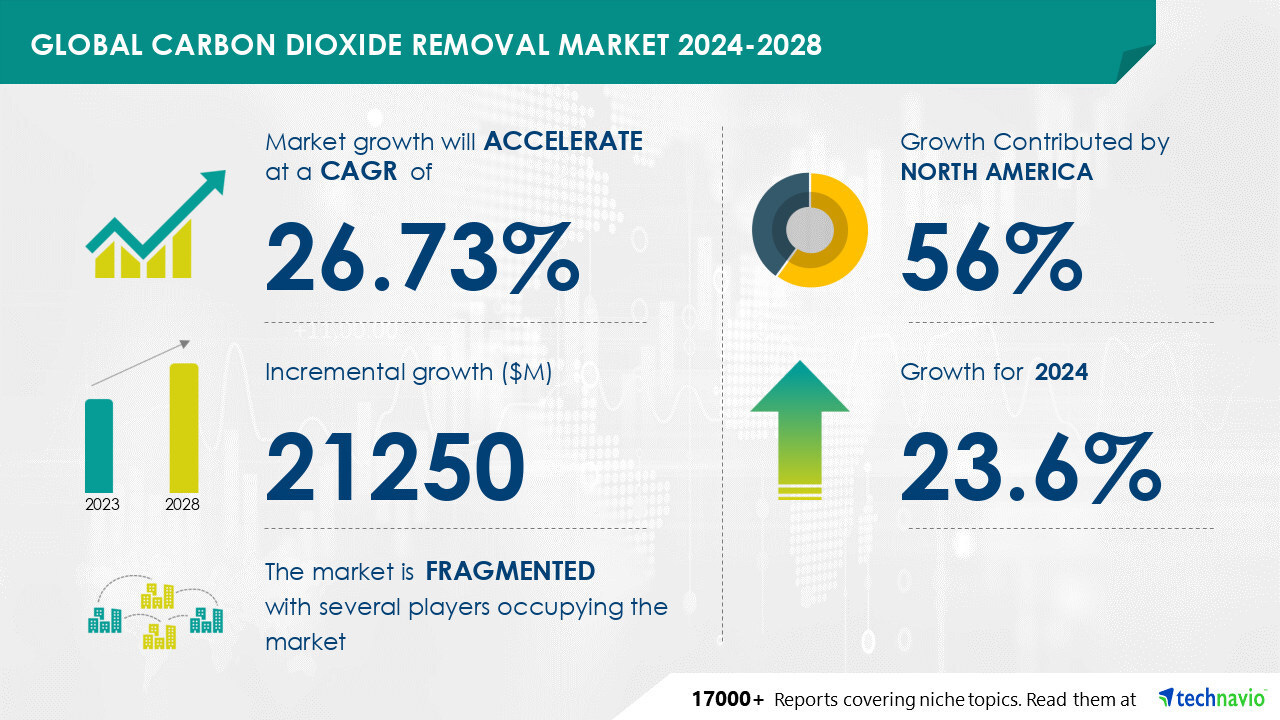
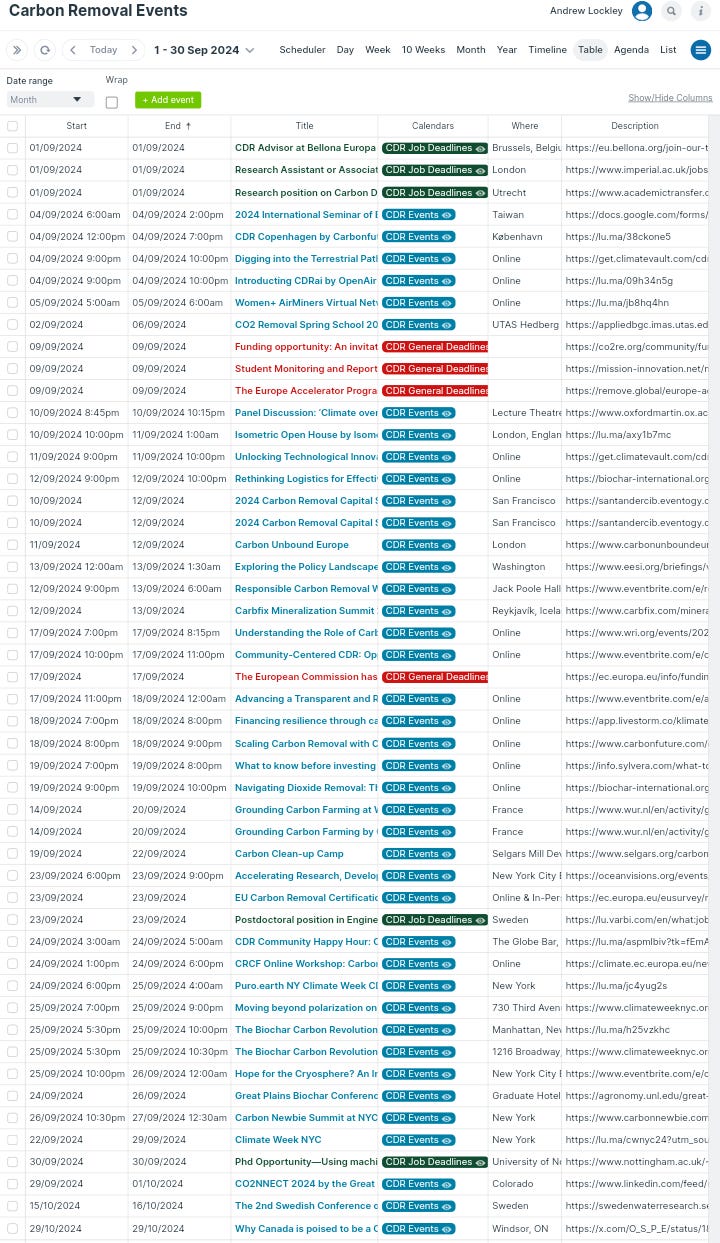

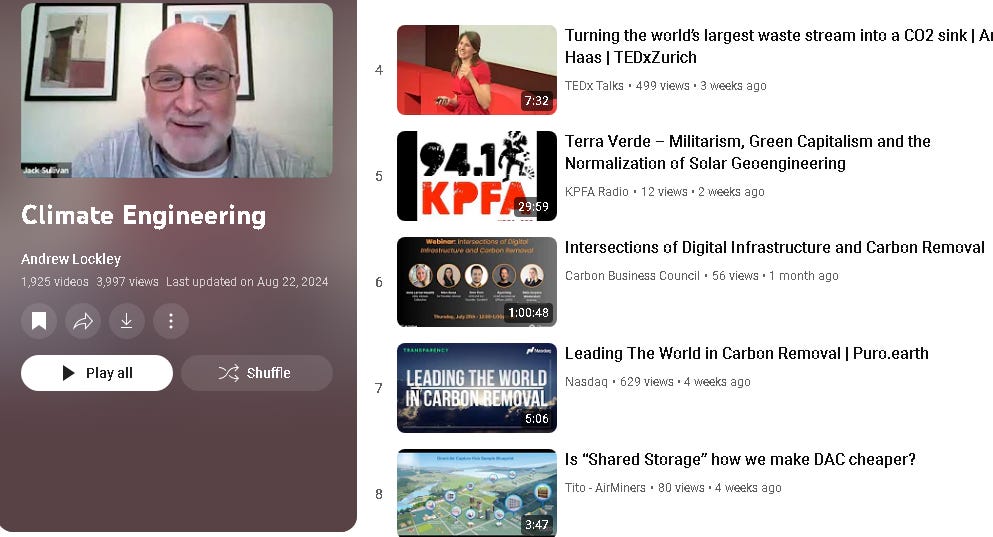
Kindly add this India event in your Event Calendar:
Carbon Reset, South Asia’s first Carbon Removal Summit on October 8th, 2024 at the Museum of Solutions, Mumbai. Hosted by Green Energy Sustainability Hub (GESH) at the Institute of Technology Bombay (IIT Bombay) and CarbonCrew, in partnership with Khemka Foundation, remove (backers of 120+ CDR startups), and Carbon Removal India Alliance (CRIA).
https://www.carbonreset.co/